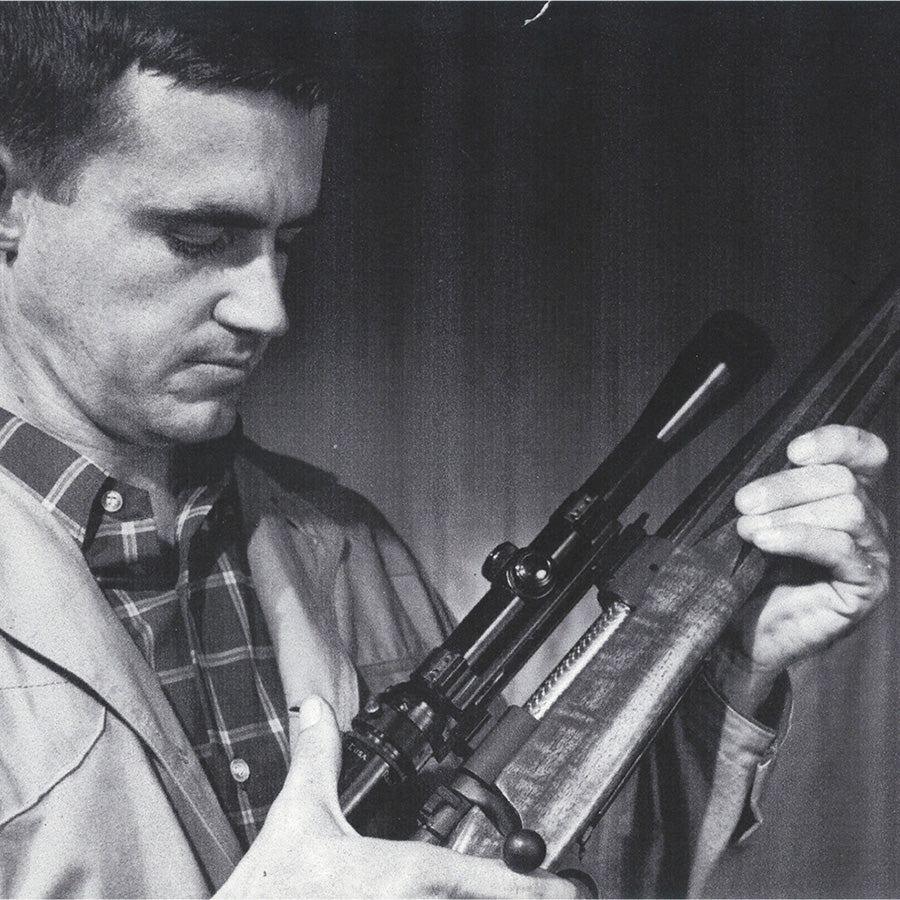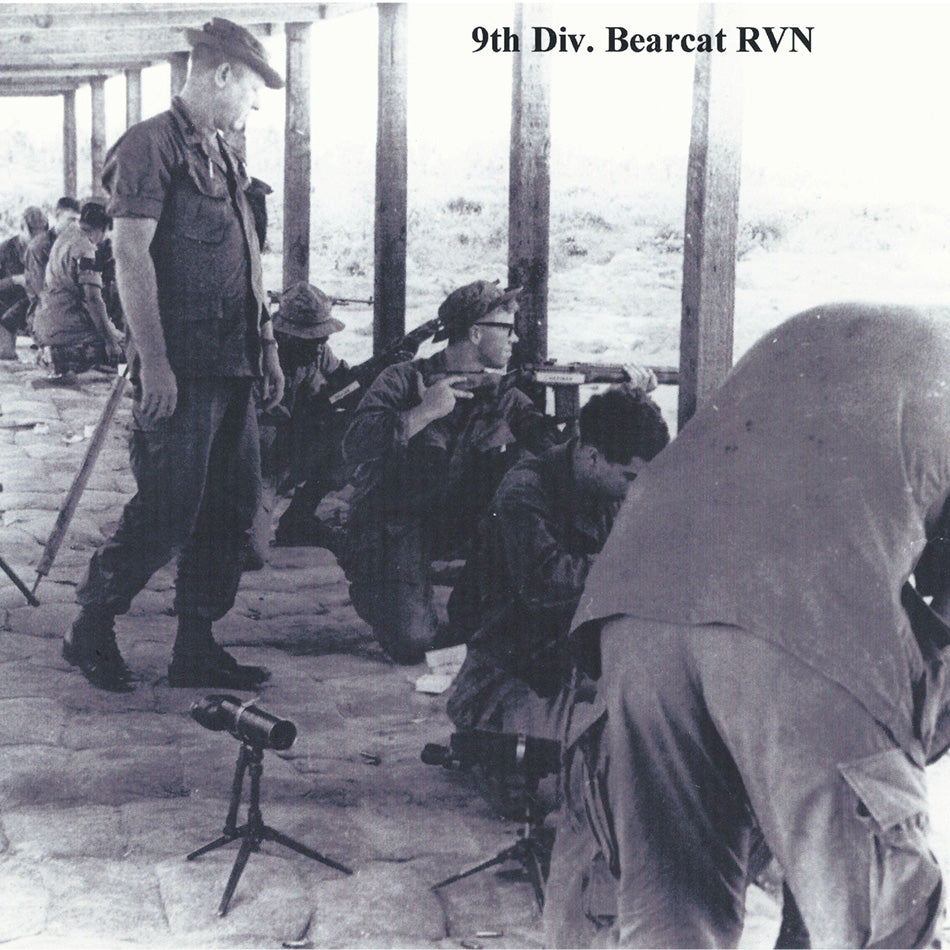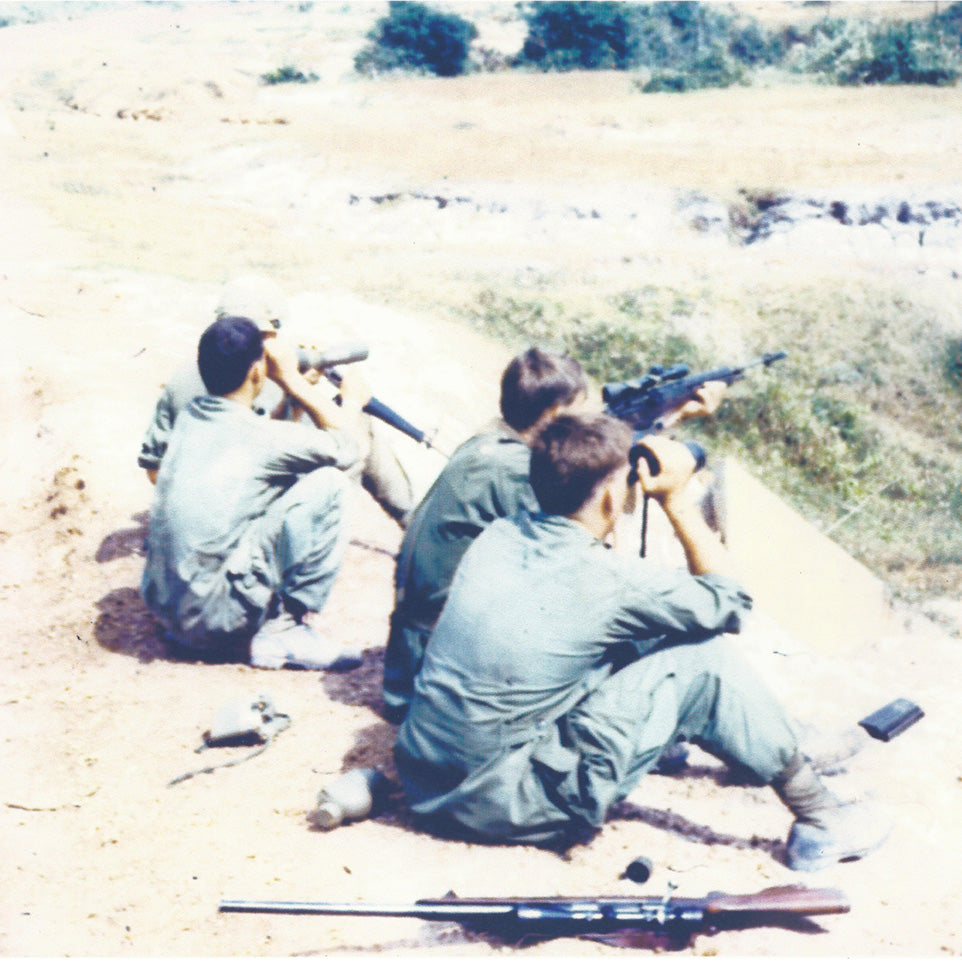As told by Corbett Leatherwood
James Milner Leatherwood was born in Dublin, Texas on January 31, 1942. He was graduated from the Stephenville High School with the Class of 1960, and received his Bachelors Degree from Tarleton State University in 1964. He also received his Commission as an Officer in the United States Army from ROTC at Tarleton. And he served in Vietnam from 1967 through 1968.
While in the military, he realized the need for improved sniper optics. After leaving the Army, he developed his well known Automatic Ranging and Trajectory (ART) scope, some of which are still in use by U.S. military troops today in Iraq and Afghanistan. Using the ART system, the operator only needs to adjust the magnification to frame the known sized target within the brackets. The CAM system actually eliminated the need for the military marksman to know the actual range, or to know actual bullet drop.
Jim’s passion for firearms and optics invention continued through his life. One of his most recent efforts was the reproduction of the early 1850s-1870s style scopes (Malcolm) for shooters who enjoy older black powder rifles. Just before his passing on September 15, 2007, one of the Leatherwood “Wm. Malcolm” long-tube scopes made it to the big screen in the movie “3:10 to Yuma”.
James Milner Leatherwood was born in Dublin, Texas on January 31, 1942. He was graduated from the Stephenville High School with the Class of 1960, and received his Bachelors Degree from Tarleton State University in 1964. He also received his Commission as an Officer in the United States Army from ROTC at Tarleton. And he served in Vietnam from 1967 through 1968.
While in the military, he realized the need for improved sniper optics. After leaving the Army, he developed his well known Automatic Ranging and Trajectory (ART) scope, some of which are still in use by U.S. military troops today in Iraq and Afghanistan. Using the ART system, the operator only needs to adjust the magnification to frame the known sized target within the brackets. The CAM system actually eliminated the need for the military marksman to know the actual range, or to know actual bullet drop.
Jim’s passion for firearms and optics invention continued through his life. One of his most recent efforts was the reproduction of the early 1850s-1870s style scopes (Malcolm) for shooters who enjoy older black powder rifles. Just before his passing on September 15, 2007, one of the Leatherwood “Wm. Malcolm” long-tube scopes made it to the big screen in the movie “3:10 to Yuma”.
Leatherwood Optics was founded in 1966 in a trailer on the Leatherwood Range in Lingleville, TX. James Leatherwood and his brother Charlie prototyped an early version of a weapon sight known as the ART, or Automatic Ranging Trajectory.
The ART scope technology was born out of necessity in the early years of the Vietnam War. Enemy snipers were killing American servicemen, but the US Army was not equipped to deal with the guerrilla warfare tactics.
The solution was to place newly trained snipers into battlefield service as soon as possible. However, Sniper Training in the late 60’s – 70’s was a long term process that required numerous hours on the range to master skills such as estimating distance, and using the proper amount of “hold-over” in order to make successful first round hits.
About this time, 2nd Lieutenant James M. Leatherwood entered the Army and brought along his recently patented ART scope design. The basic concept of the ART scope lies in the integrated base’s ability to raise and lower the rear end. This eliminates the need for the shooter estimate holdover.
Shortly after, the Army had issued Leatherwood ART II scopes in the hands of Army snipers. The use of the new scope system had dramatic effects – greatly reducing the amount of time it took to train snipers. It was now possible to rapidly train snipers to get first round hits out to 900 meters, without having to devote previous time to distance estimation or “hold-over.” Soon, American snipers were dominating the field in Vietnam and the ART scope system became legendary.
Over the years, the ART scope system had been steadily improved under the discerning control of the original inventor James Leatherwood.
The core tenets of Leatherwood optics have always been to manufacture High Quality, Feature Rich optics that even the working class can afford. Jim Leatherwood, realizing that the average shooter could not afford the exorbitant prices being charged for quality rifle scopes began looking to take advantage of the global economy.
Leatherwood Optics was founded in 1966 in a trailer on the Leatherwood Range in Lingleville, TX. James Leatherwood and his brother Charlie prototyped an early version of a weapon sight known as the ART, or Automatic Ranging Trajectory.
The ART scope technology was born out of necessity in the early years of the Vietnam War. Enemy snipers were killing American servicemen, but the US Army was not equipped to deal with the guerrilla warfare tactics.
The solution was to place newly trained snipers into battlefield service as soon as possible. However, Sniper Training in the late 60’s – 70’s was a long term process that required numerous hours on the range to master skills such as estimating distance, and using the proper amount of “hold-over” in order to make successful first round hits.
About this time, 2nd Lieutenant James M. Leatherwood entered the Army and brought along his recently patented ART scope design. The basic concept of the ART scope lies in the integrated base’s ability to raise and lower the rear end. This eliminates the need for the shooter estimate holdover.
Shortly after, the Army had issued Leatherwood ART II scopes in the hands of Army snipers. The use of the new scope system had dramatic effects – greatly reducing the amount of time it took to train snipers. It was now possible to rapidly train snipers to get first round hits out to 900 meters, without having to devote previous time to distance estimation or “hold-over.” Soon, American snipers were dominating the field in Vietnam and the ART scope system became legendary.
Over the years, the ART scope system had been steadily improved under the discerning control of the original inventor James Leatherwood.
The core tenets of Leatherwood optics have always been to manufacture High Quality, Feature Rich optics that even the working class can afford. Jim Leatherwood, realizing that the average shooter could not afford the exorbitant prices being charged for quality rifle scopes began looking to take advantage of the global economy.



